In Chingqing, there is an elegant zoo - more like an open
preserve - for a group of pandas.
There is no sanctioned name for what a group of pandas is called...
because they are solitary beasts. |
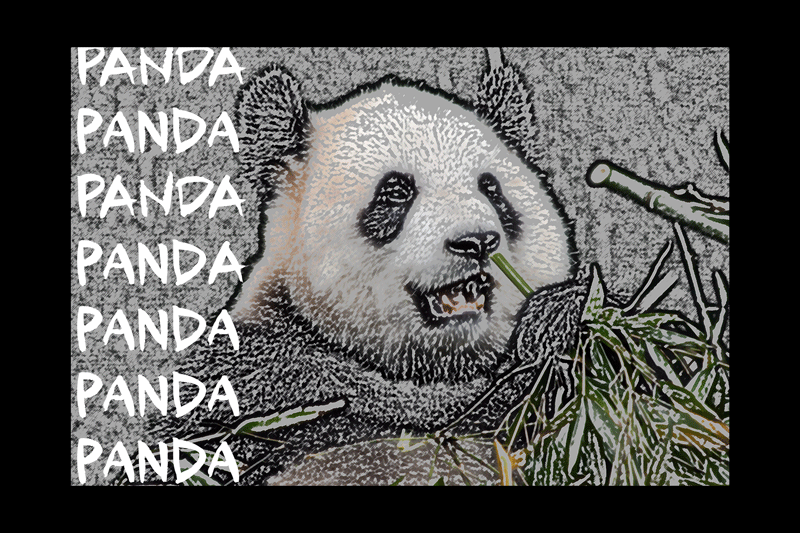 |
| Chongqing. |
 |
| A red panda - a disagreeable little weazel-like character with raccoon
markings. |
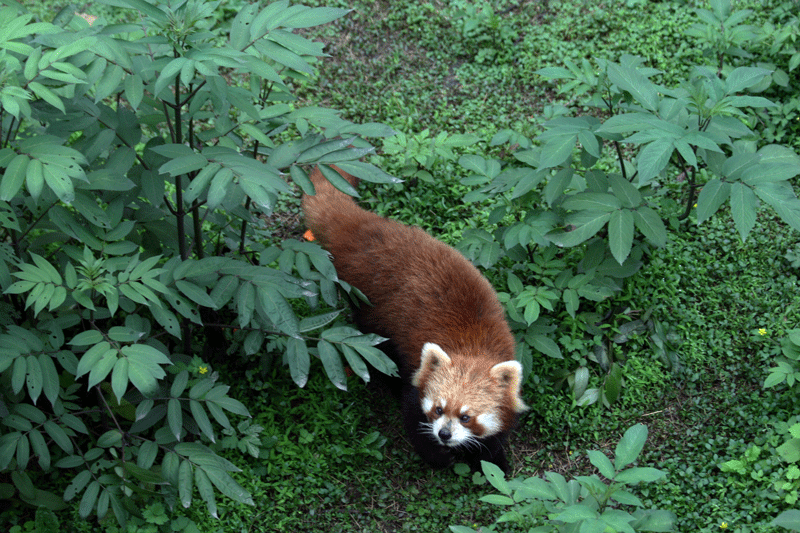 |
| |
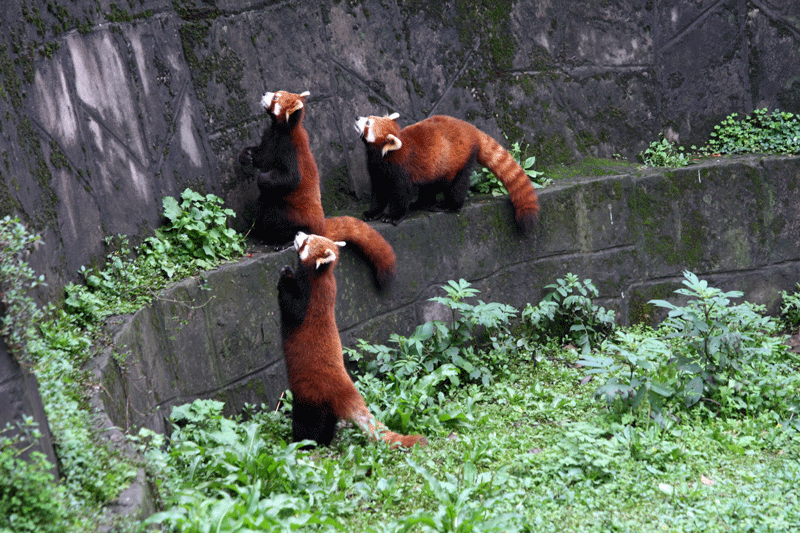 |
| A wild giant panda’s diet is almost exclusively (99 percent) bamboo. |
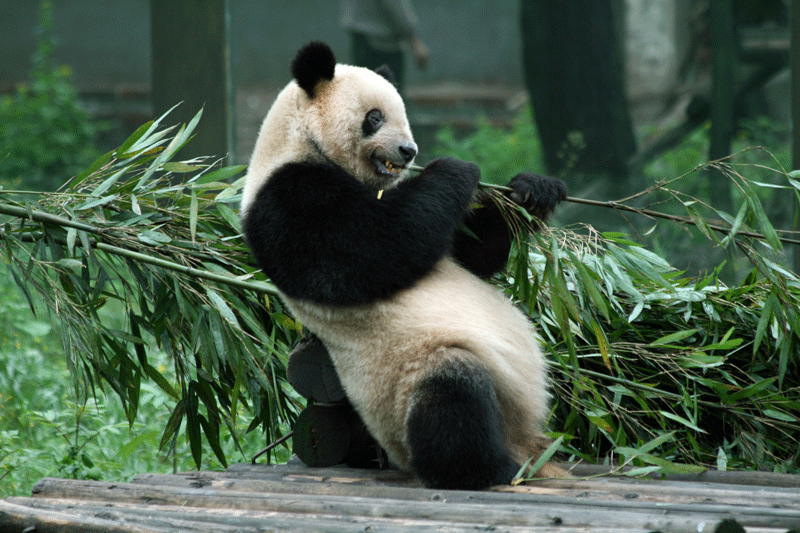 |
| The balance consists of other grasses and occasional small rodents or
musk deer fawns. |
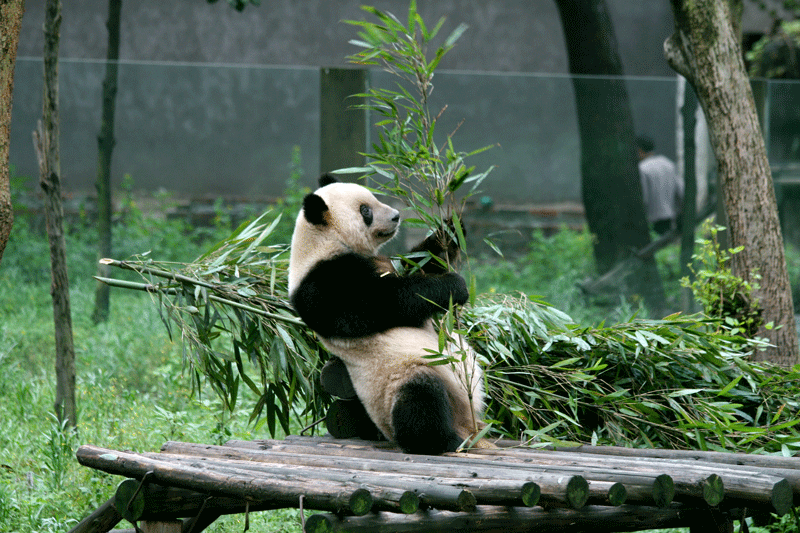 |
| In zoos, giant pandas eat bamboo, sugar cane, rice gruel, a special
high-fiber biscuit, carrots, apples, and sweet potatoes. |
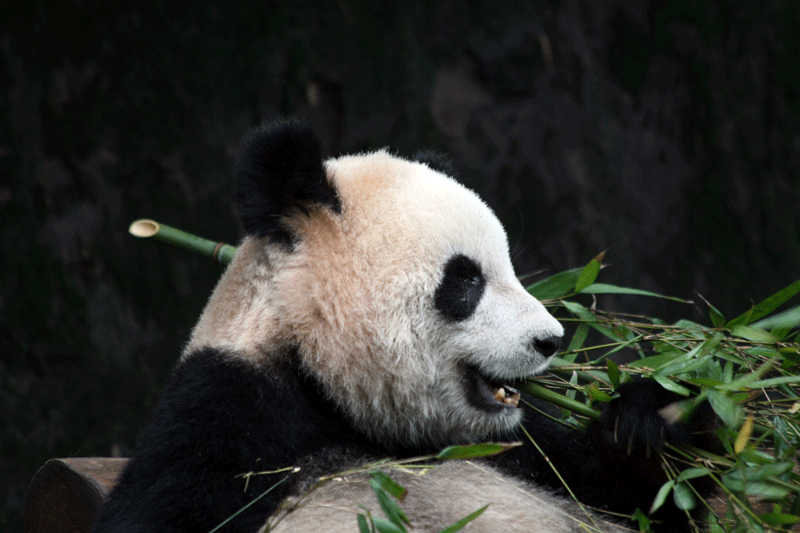 |
| A giant panda’s digestive system is more similar to that of a carnivore
than an herbivore, and so much of what is eaten is passed as waste. |
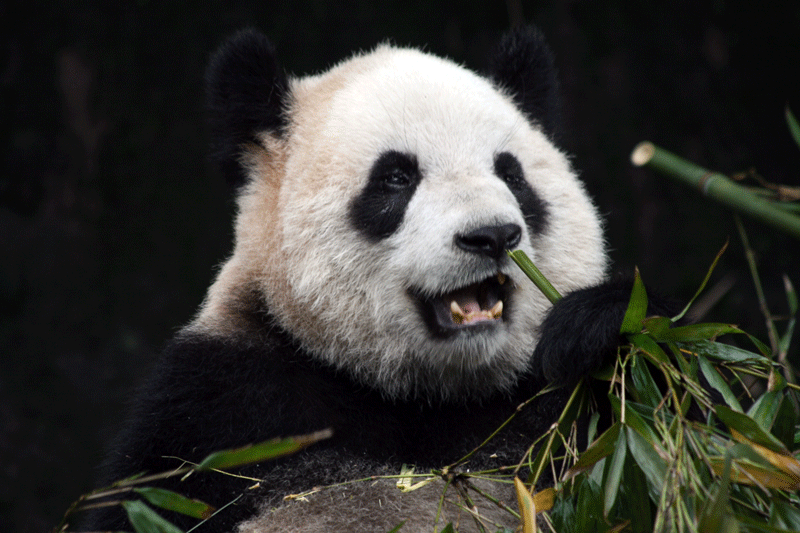 |
| To make up for the inefficient digestion, a panda needs to consume a
comparatively large amount of food—from 20 to 40 pounds of bamboo each
day—to get all its nutrients. |
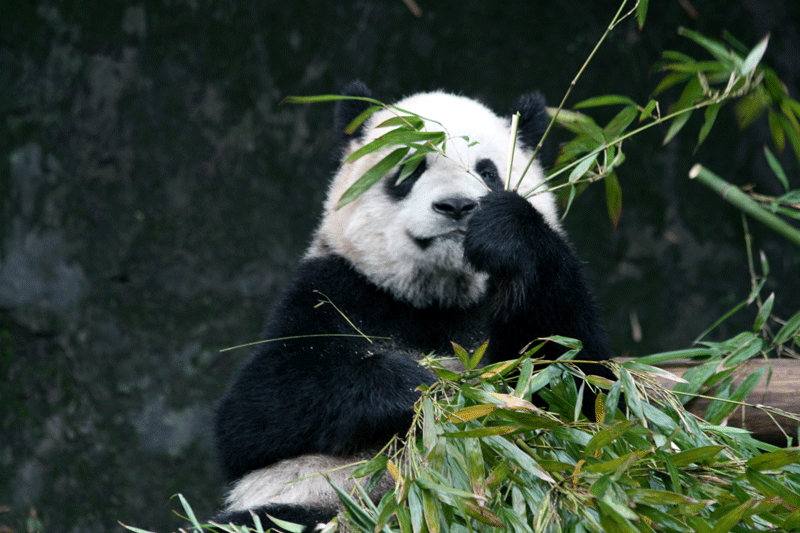 |
| To obtain this much food means that a panda must spend 10 to 16 hours
a day foraging and eating. |
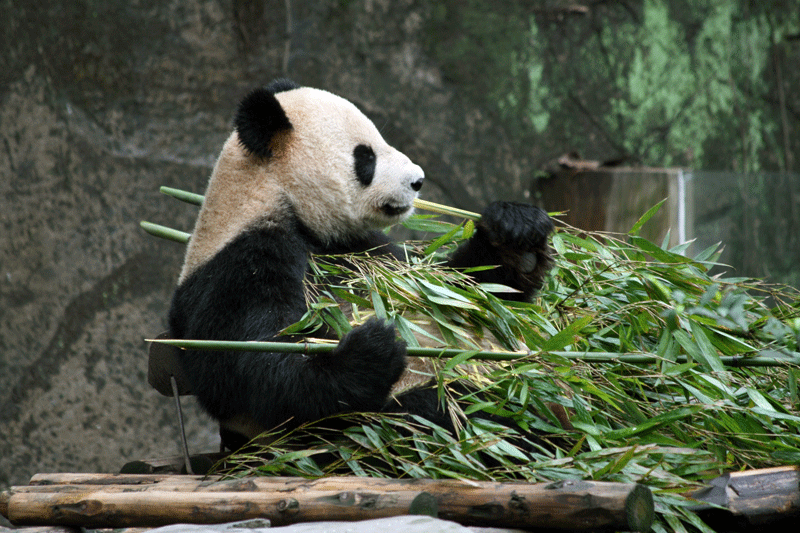 |
| The rest of its time is spent mostly sleeping and resting. |
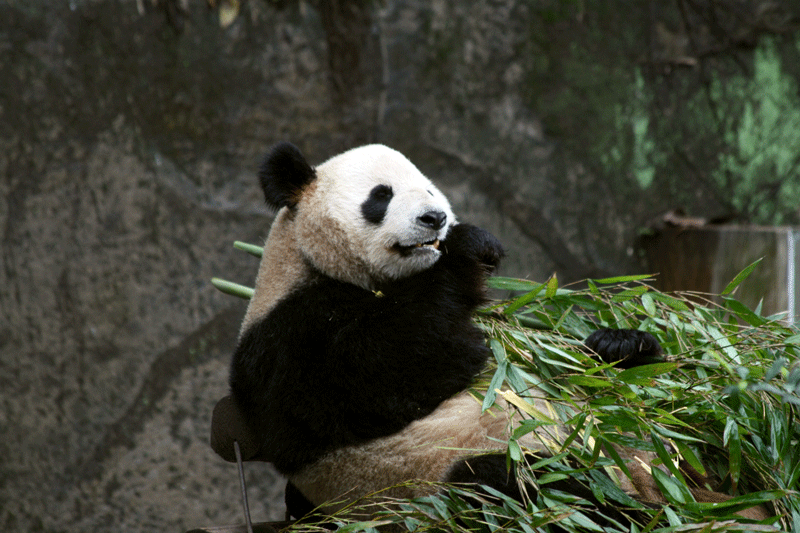 |
About the size of an American black bear, giant pandas stand between
two and three feet tall at the shoulder (on all four legs), and reach
four to six feet long. |
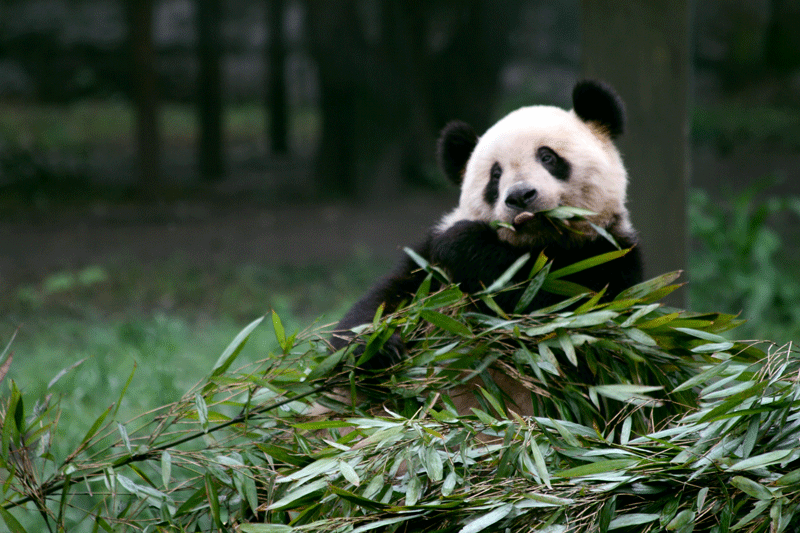 |
| Males are larger than females, weighing up to 250 pounds in the wild.
Females rarely reach 220 pounds. |
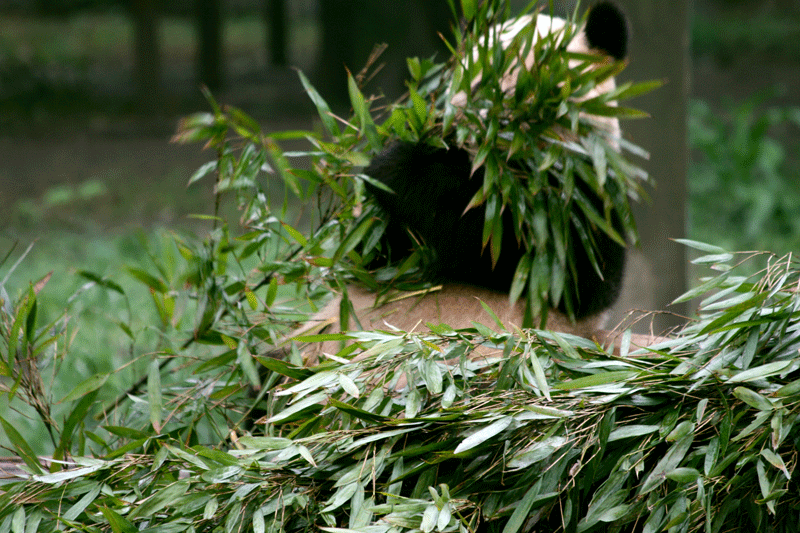 |
| The giant panda is listed as endangered in the World Conservation Union's
(IUCN's) Red List of Threatened Animals. |
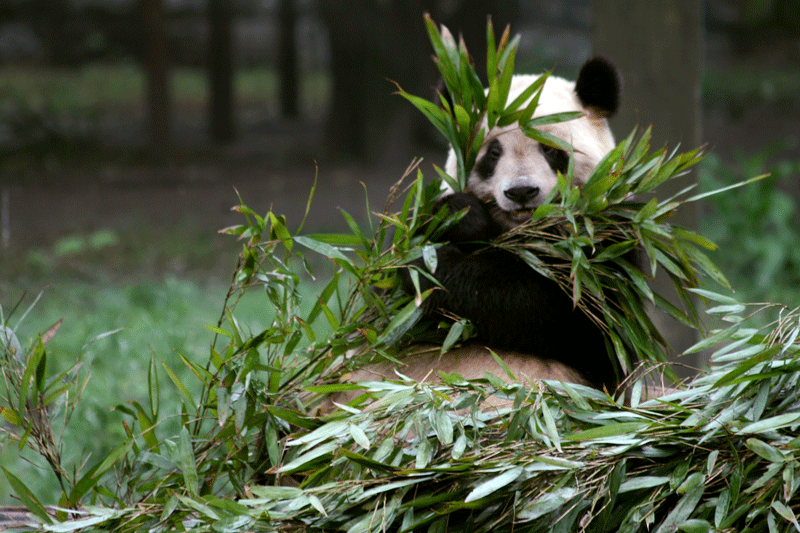 |
| There are about 1,600 left in the wild. |
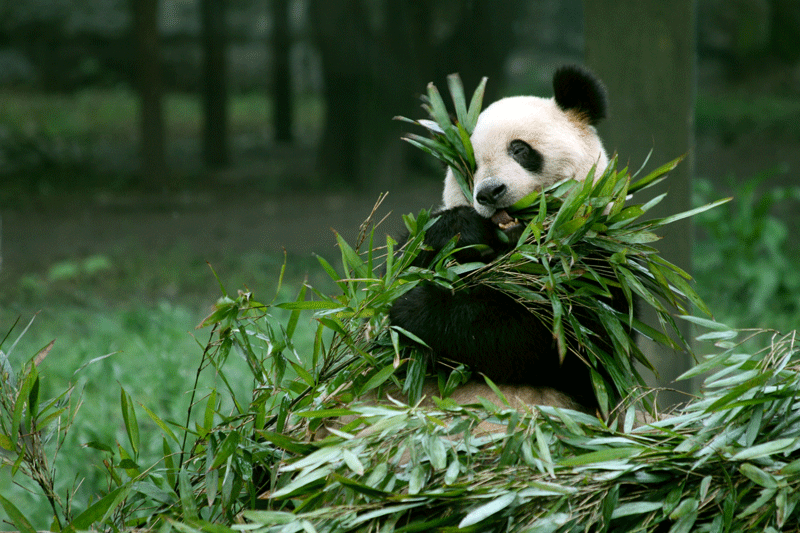 |
| Nearly 300 pandas live in zoos and breeding centers around the world,
mostly in China. |
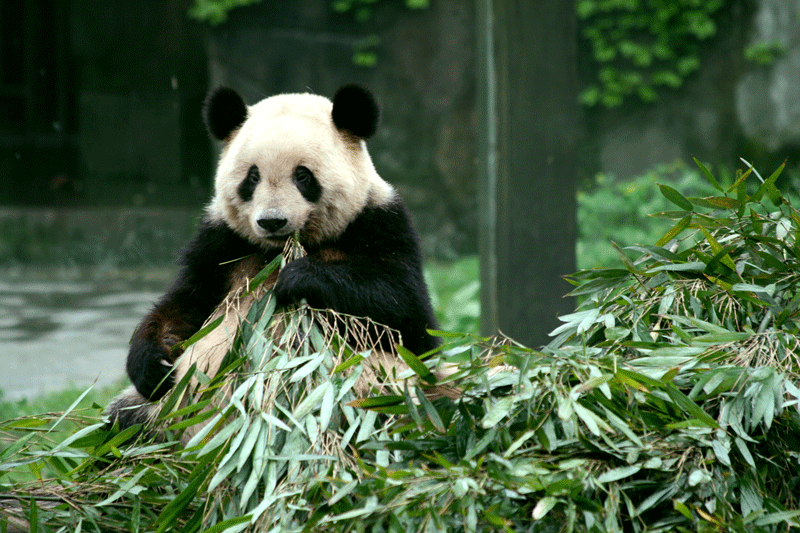 |
ScienceDaily (Mar. 6, 2010) -
Professor Mike Bruford, Cardiff School of Biosciences, worked on the study
as part of an ongoing collaboration with the Chinese Academy of Sciences,
Institute of Zoology, funded by the Royal Society.
He said: "The panda is a true bear and is a carnivore, so it possesses
the genes necessary for being a meat-eater and yet its diet is almost exclusively
herbivorous. This may suggest that it relies on microbes in its gut to
digest bamboo rather than on anything in its genetic make-up."
|
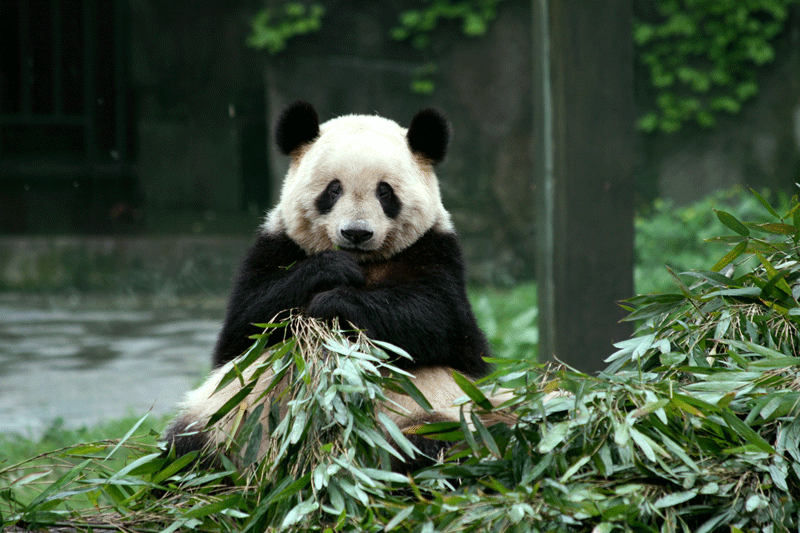 |
| "Taste is also important when it comes to the development of dietary
habits and the sequencers discovered mutations in the panda's T1R1 gene
which may affect its ability to taste meat, one possible explanation for
why a potential carnivore would rely on a strict bamboo diet." |
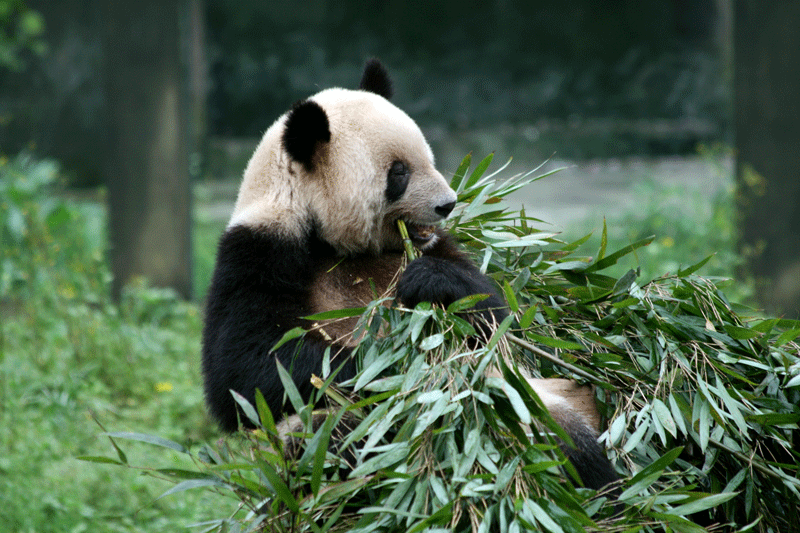 |

















